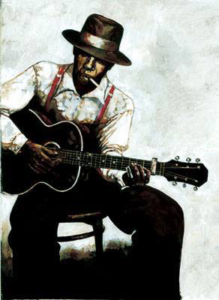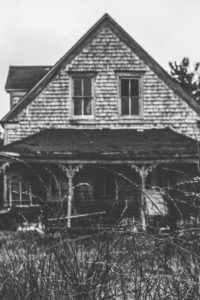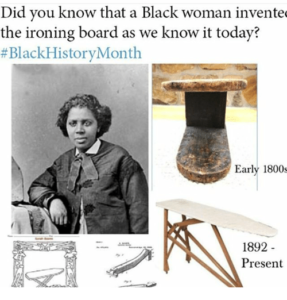“Life is that large”: Blues-Durative Sequences in the Trilogy

Nicholas Githiri /Pexels
This blog invites you on a journey to find “blues people” in Beloved, Jazz, and Paradise and follow the arcs of their blues-durative emotional story structures. (see The Roots of Toni Morrison’s Durative Blues and Emotional Story Structures for more on those concepts). We will explore the following questions with each of the novels:
1. By examining some possible blues-based examples, what might we realize about characters that we might not have realized without thinking about the blues? And about the places and times that they inhabit?
2. What narrative units—incidents, events, episodes, stories; also images, vocalizations, patterns of repetition–can be captured by the concept of “durative-blues structure”?
3. How are readers affected by a prototypical story structure that offers scant, if any, resolution or closure?
A Remembering and Forgetting Blues
In Beloved, the blues-durative structure has to do primarily with the historical and geographical arcs from mid-19th century slave society to the immediate decades of its aftermath, from “Sweet Home” plantation in Kentucky to the house on 124 Bluestone (note the “blues-tone” reference) in Cincinnati’s outskirts. And there are other bits of blues-durative times and places, such as an episode on board a slave ship during the Middle Passage (see the Slave Ship Geography blog) and somewhere south of Kentucky where Sethe was born and where she saw her mother’s body hanging from a tree one day, coming in from the field. (see the Chronotopic Imagination of Toni Morrison blog for more on the significance of time and space in the “rememories” of Sethe and the others)
Separations/reunions, love-in death; a near shattering of psyche. And then a tenuous possibility of a future, with the various bouts of remembering and forgetting seeming to let up now that a maybe-girl/ghost has disappeared. A remembering-and-forgetting blues.
Zooming into a sequence: incidents, episodes, events

Portrait Robert Johnson
One bluesy sequence in Beloved is where Paul D and Sethe wake up the day after their initial, spectacular meeting in 187; there is a weaving of Sethe’s and Paul’s thoughts with some touchy conversation between her daughter, Denver, and Paul D. What transpires could be the basis for a blues song; in fact, Paul D is dabbling with some song-lines that day.
Sethe’s thoughts open the section: waking up thinking that, just maybe, she could afford to feel things again with this dear man here to “catch” her if she fell, Sethe soon realizes that Paul D’s coming to the house and driving out the baby’s ghost has been disruptive on a large scale because Denver is very upset. “Paul D arrived and broke up the place “(47), and he also reminded her how barren and gray it was (52-5

Harrison Haines /Pexels
The refrain shifts to Paul D’s emotions, reminding us that he is a walking man who can’t stay in one place too long because it was “the only way he could convince himself that he would no longer have to sleep, pee, eat or swing a sledge hammer in chains” (49). Sethe and Paul D and even Denver are opening in ways that are “scary” for each of them to contemplate.
Finally, Paul D is a singing-man, and he is singing that morning, even making up a song about how he encountered Sethe the day before on her front porch: “bare feet and chamomile sap.” (And note how this song is completed, and sung, just before the last page of Beloved) Paul D is a quintessential bluesman.
Playin’ the Changes
In Jazz, the narrator may be the personification of jazz itself, which has its roots in the blues. But the blues-durative structure in this second novel of the trilogy has to do with changes, as the past seems to careen along next to the unfolding future of modernist post-war culture, when “everything was ahead at last.” The primary chronotopes, or timespaces, in Jazz are New York City (primarily Harlem) in the 1920’s and rural Virginia in the late nineteenth-century after the World War I was over. The Great Migration is the historical context: migrants Joe and Violet “train-ride” to “the City” with all its jazz-hunger for the future, but their orphaned childhoods linger around them.
Joe, Violet and Dorcas are caught up in a blues threesome, ending in a shooting, a sacrifice, and searing rancor and regret. Complicated shifts in in the central characters occur, however, that dial down the emotions.
Zooming into a Sequence: Incidents, Episodes, Events
The most sustained blues in the novel is Joe’s tracking of his mother back in rural Virginia, 3 times, to get her to acknowledge him, and then the tracking of his Harlem girlfriend, Dorcas, another orphan in this novel of orphans. What a blues tune: “he shot her just so he could keep the feeling going.” The long story sequence ends with a quietude of Joe and Violet day-dreaming under a sky-blue quilt while the clicking sound of “the City” is ongoing, rhythmic.

But consider another sequence as a blues tune; the conversation between Alice and Violet over the hot pressing iron in Alice’s hands on two occasions. How would you describe this blues? What do you make of key descriptions, such as Violet’s “natty coat” and Alice’s fantasy of “stomping” the face of some woman who took off with her husband?
“The end is in the beginning and lies far-ahead.” —Ralph Ellison, Invisible Man
In Paradise, the blues-durative structure has to do with a difficult journey on foot from Louisiana to Oklahoma territory followed by a gendered and generational conflict that rocks the 2 locations in the Oklahoma Panhandle timespace of the novel: the all-black town of “Ruby,” the second effort to make a haven for the band of families with “8—rock” blood (skin coloring the blackest black of a coal mine) pitted against the wayward women at “the Convent” 17 miles away. Violence ensues, death and possible resurrection occurs, and an uneasy, unfinished quietude drapes itself over the landscape as the story moves to another timespace altogether, a chronotope of timelessness and eternal return. The work will go on, and on.

Wallace Chuck /Pexels
Zooming into a Sequence: Incidents, Episodes, Events
A specific sequence that is blues-like can be found in the “Consolata” section, the 7th of 9 sections in Paradise, which begins with Connie in the “good clean darkness” of the wine cellar at the “Convent” (formerly an embezzler’s mansion in the Oklahoma Panhandle) where she sleeps. It has been many years since her only love affair ended; now, she is caretaker for 4 other women and growing despondent. She awakes in the dim light on this day “to the wrenching disappointment of not having died the night before” (221), and here begins a progression of incidents and events that form a blues episode.
Connie is repulsed by her wine-drenched routine and wishes that “a great hovering foot would descend and crush her like a garden pest” (221). Her complaining blues refrain begins with thoughts about those 4 women with her; their “baby girl” behavior; one cuts herself, another wants to be some sort of cabaret star, their “greedy, hammering music” ( 222) and badly cooked food. In this inebriated state, she remembers the major events of her life like beads on a rosary; with Mother Mary Magna for 30 years until she met the man who “cracked her like a pullet’s egg” (225). The most intense moments of their coupling is narrated here, decades after the affair ended, forming another blues which ends when she remembers how she bit his lip, because she “just wanted to go home.”
Responses Invitation: reflect, write, post:
What do you think Connie means, “I just wanted to go home?” and what does this suggest in terms of a durative blues?
Still interested in continuing with more blogs on emotions? Go next to Empathy, Enough for All.
And do sign up for the Newsletter at the bottom of any page here!
